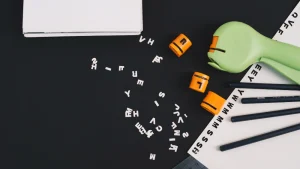Best Practices for Using Text Extraction Tools Effectively
In a world where efficiency is key, text extraction tools powered by Optical Character Recognition (OCR) are game-changers. These tools simplify tasks such as converting scanned documents into editable text, extracting key data, and organizing digital files. However, like any technology, their effectiveness depends on how you use them.
This article outlines the best practices for using text extraction tools to their full potential. With actionable tips, examples, and a handy checklist, you’ll learn how to save time, reduce errors, and improve workflows seamlessly.

Why Best Practices Matter
Even the most advanced text extraction tools can falter when handling poor-quality inputs or complex layouts. Following best practices ensures:
- Accurate Results: High-quality text extraction with fewer errors.
- Time Savings: Faster processing and verification.
- Seamless Workflows: Smooth integration into your existing systems.
Let’s dive into how you can make the most of your OCR tools.
Best Practices for Effective Text Extraction
1. Start with High-Quality Input Files
The accuracy of text extraction begins with the quality of the document or image. Blurry or low-resolution files lead to poor results, regardless of the tool’s capabilities.
Tips for High-Quality Inputs:
- Optimal Resolution: Scan documents at 300 DPI or higher to capture clear text details.
- Lighting Matters: Avoid shadows and glare by using even, soft lighting.
- Use Appropriate Formats: High-quality formats like PNG and TIFF retain clarity better than compressed formats like JPG.
Example: A financial institution scanned invoices at 150 DPI, resulting in incomplete data extraction. After switching to 300 DPI scans, OCR accuracy improved by 85%.
2. Preprocess Images Before Extraction
Image preprocessing enhances document quality, making text easier for OCR tools to recognize. Most tools have built-in features to clean and optimize inputs.
Preprocessing Tips:
- Deskewing: Straighten tilted text for better alignment.
- Contrast Enhancement: Improve text visibility against the background.
- Noise Removal: Eliminate smudges, marks, or water stains to focus on the text.
Illustration: A legal firm used an OCR tool to deskew and brighten old court records. Preprocessing improved accuracy, ensuring critical information was preserved.
3. Verify Extracted Text for Accuracy
While OCR tools are highly reliable, occasional errors can occur, particularly in complex documents or handwritten text. Verifying the output ensures the extracted data is usable.
Verification Methods:
- Critical Checks: Focus on sensitive data such as names, dates, and amounts.
- Leverage Grammar Tools: Use software like Grammarly to catch typographical errors or inconsistencies.
- Split Large Tasks: For bulk processing, assign team members to verify sections for faster completion.
Example: A healthcare administrator reviewed OCR-processed patient records, correcting minor errors to maintain compliance and data integrity.
4. Integrate OCR Tools into Workflows
Text extraction tools are most effective when seamlessly integrated into your daily workflows. Automation and cloud connectivity can enhance their impact.
Integration Ideas:
- Automate Repetitive Tasks: Pair OCR tools with automation platforms like Zapier for bulk processing.
- Sync with Cloud Storage: Save extracted files directly to platforms like Google Drive or Dropbox for easy access.
- Link to Business Systems: Connect OCR outputs to ERP or CRM systems to streamline data entry and updates.
Scenario: An e-commerce business uses OCR to extract product details from invoices, which are then automatically uploaded to their inventory system.
5. Choose the Right Tool for the Job
Not all text extraction tools are suited for every task. Selecting the right one can make a significant difference in speed and accuracy.
Tool Suggestions:
- For Everyday Tasks: Web-based tools like this tool offer quick, hassle-free text extraction.
- For Complex Layouts: ABBYY FineReader excels at preserving multi-column documents and tables.
- For Handwritten Text: Google Vision AI provides high accuracy for processing handwritten notes.
Example: A small business owner uses Picture2Txt.com for invoices, while a research team opts for ABBYY FineReader to digitize multi-page technical papers.
6. Organize Files Before Processing
Proper organization of documents before processing saves time and ensures smoother workflows.
Organizing Tips:
- Group by Category: Pre-sort documents based on type (e.g., invoices, contracts) or project.
- Use Logical Names: Name files clearly for easy identification.
- Archive Completed Files: Move processed documents to separate folders to avoid clutter.
Checklist for Using Text Extraction Tools
To help you optimize your experience, here’s a practical checklist for effective text extraction:
Input Quality:
- Scan at 300 DPI or higher.
- Ensure no shadows or glare.
- Use PNG or TIFF formats for clarity.
Preprocessing:
- Deskew misaligned text.
- Enhance contrast and remove noise.
- Optimize faded documents.
Verification:
- Check critical fields for accuracy.
- Use grammar tools to refine the output.
- Split review tasks for faster validation.
Integration:
- Automate bulk processes.
- Sync with cloud platforms for storage.
- Connect to ERP or CRM systems for real-time updates.
Tool Selection:
- Use Picture2Txt.com for simple tasks.
- Opt for ABBYY FineReader for advanced needs.
- Try Google Vision AI for handwriting.
Organization:
- Pre-sort documents before processing.
- Use consistent naming conventions.
- Archive completed files promptly.
Final Thoughts
By following these best practices, you can unlock the full potential of text extraction tools, saving time, reducing errors, and streamlining your workflows. From preprocessing images to verifying extracted data, each step ensures better results and smoother operations.
